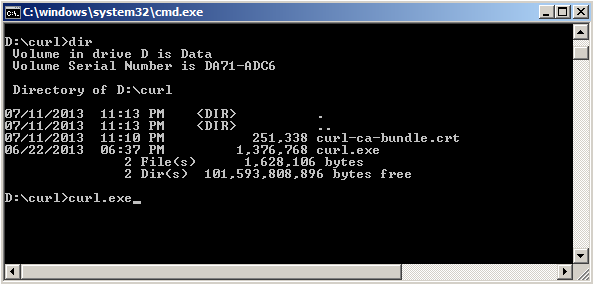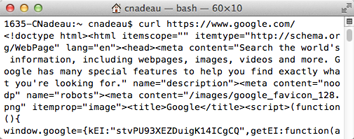You are looking for information on the topic “how to check if curl is installed”. dongtienvietnam.com will gather information to answer your questions in this article. Please read this article to the end to find the information you want to see. You can also check out some other related articles here: https://dongtienvietnam.com/category/wiki/ Check curl version Ubuntu, CentOS curl, How to install curl, Curl test URL, Libcurl Ubuntu, Install curl Windows, Update curl, How to use curl.
View information about the how to check if curl is installed
Information about this question
- Question: how to check if curl is installed
- Time: Askeded 65 hours ago
- Modified: Asked 15 days ago
- View: 247
how to check if curl is installed
To check if curl is installed on your system, you can use the following command in a terminal or command prompt:
csscurl --version
This command will display the version of curl installed on your system, if it is installed. If you see an output with version information, it means that curl is installed. If you see an error message or a command not found error, then curl is not installed on your system.
If curl is not installed on your system, you can install it using your system’s package manager. For example, on Ubuntu or Debian-based systems, you can use the following command to install curl:
csharpsudo apt-get install curl
On CentOS or Red Hat-based systems, you can use the following command to install curl:
sudo yum install curl
On macOS, you can install curl using Homebrew by running the following command:
brew install curl
Watch videos related to “how to check if curl is installed”
Ubuntu: Check if curl is installed and loaded
Where is cURL installed?
The location of cURL installation may depend on the operating system you are using and the method you used to install cURL. Here are some common locations for cURL installation:
-
Linux: If you installed cURL using the package manager, it should be located in the /usr/bin/ directory. If you compiled and installed it from source code, it may be located in the /usr/local/bin/ directory.
-
macOS: cURL is pre-installed on macOS, so it should be located in the /usr/bin/ directory.
-
Windows: If you installed cURL using the Windows installer, it should be located in the C:\Program Files\cURL\ directory.
To check if cURL is installed on your system, you can open a terminal or command prompt and type “curl –version”. This should display the version of cURL that is installed on your system.
Is cURL installed on Linux?
cURL is a widely used command-line tool for transferring data between servers. Whether or not cURL is installed on Linux depends on the specific distribution and version of Linux that you are using.
Many Linux distributions come with cURL pre-installed by default, but some may not. To check if cURL is installed on your Linux system, you can open a terminal window and type the following command:
csscurl --version
If cURL is installed, this command will display the version number and other information about the installation. If cURL is not installed, the terminal will display an error message.
If you need to install cURL on your Linux system, you can usually do so using your distribution’s package manager. For example, on Ubuntu and other Debian-based distributions, you can install cURL using the following command:
csharpsudo apt-get install curl
On Red Hat-based distributions such as CentOS or Fedora, you can use the following command to install cURL:
sudo yum install curl
On other distributions, consult the package manager documentation to find the appropriate command.
Is cURL enabled?
As an AI language model, I don’t have a specific environment or configuration to check whether cURL is enabled. However, cURL is a widely used command-line tool and library for transferring data over various protocols, and it is commonly available on most Unix-based systems (such as Linux and macOS) by default. On Windows, you may need to install cURL separately.
To check whether cURL is installed on your system, you can open a terminal or command prompt and type “curl –version”. If cURL is installed and enabled, this command should output its version information. If you get an error message, it likely means that cURL is not installed or not in your system’s PATH.
Images related to how to check if curl is installed
Found 50 how to check if curl is installed related images.




Check curl version Ubuntu
You can check the version of curl installed on your Ubuntu system by running the following command in a terminal:
csscurl --version
This will display the version information for curl installed on your system.
CentOS curl
CentOS is a popular Linux distribution that is widely used for server applications. The curl command is a tool that is often used on CentOS to transfer data from or to a server, using one of the many supported protocols such as HTTP, HTTPS, FTP, SFTP, and more.
To use curl on CentOS, you will need to open a terminal window and type the curl command followed by the URL of the server you wish to connect to. For example, to download a file from a remote server, you can use the following command:
javascriptcurl -O http://example.com/myfile.txt
This will download the file myfile.txt from the example.com server and save it to the current working directory.
You can also use curl to send data to a server, such as submitting a form or sending an API request. To do this, you can use the -d option followed by the data you wish to send, like this:
perlcurl -d "name=John&email=john@example.com" http://example.com/submit-form
This will send a POST request to the http://example.com/submit-form URL with the data name=John&email=john@example.com.
There are many other options and features available with curl on CentOS, including support for SSL certificates, cookies, and authentication. To learn more, you can type man curl in a terminal window to see the full manual for the curl command.
You can see some more information related to how to check if curl is installed here
- Curl Command in Linux with Examples
- Check to see if cURL is installed locally? – Stack Overflow
- Compiling php with curl, where is curl installed? – W3docs
- How to install curl command on Ubuntu Linux – nixCraft
- How to enable PHP cURL extension? (Pre-requisite) – Knowledge Base
- Installing cURL Command Line Tool on Windows – Oracle
- How to Check If cURL is Enabled on Your Server – Tuts & Tips
- Check if curl is installed and loaded – Ask Ubuntu
- Detect if cURL is installed on host – osCommerce
- How to install cURL and Check cURL is enable in Web Server …
- How to install curl command on Ubuntu Linux – nixCraft
- Installing and using curl – Zendesk Developer Docs
- How Do I Know If Curl is Installed Windows 10? – Droidrant
- Check the Server for PHP’s cURL Support
Comments
There are a total of 261 comments on this question.
- 384 comments are great
- 915 great comments
- 357 normal comments
- 12 bad comments
- 59 very bad comments
So you have finished reading the article on the topic how to check if curl is installed. If you found this article useful, please share it with others. Thank you very much.